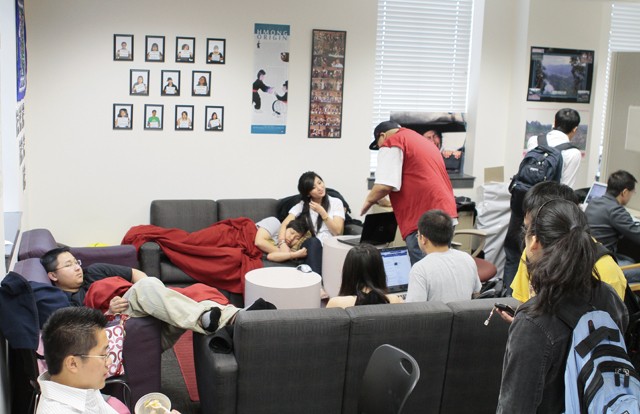With textbooks propped open and microwavable dinners still steaming, members of the Hmong Minnesota Student Association gathered in their room 226 cubicle located in Coffman Union, a valued space among student groups on the University of Minnesota campus. Members paused when a stranger walked in, tallied everyone present on a clipboard and left. This tally will be used next year to determine whether HMSA is worthy of its space. Over the past few years, HMSA has fared well with the counts. Other groups havenâÄôt been as fortunate. The Minnesota Public Interest Research Group was one of the seven groups not recommended to receive space in Coffman Union next year. âÄúI could be sitting in there for maybe two hours and no one comes by,âÄù MPIRG chapter co-chairwoman Marisa Wojcik said. âÄúAnd then maybe shortly after I leave, someone comes to check the office and thereâÄôs no one in there anymore.âÄù This year, 48 of the 719 registered student groups at the University applied for the 29 office spaces on Coffman UnionâÄôs second floor. The group charged with allocating the spots in Coffman Union is the Student Union and Activities Board of Governors, a 13-member group comprised entirely of University students. âÄúAt the end of the day, this is the studentsâÄô space, and we want to be able to serve the greatest number of them to the best we can with what he have to offer,âÄù Joel Livingood, policies chairman of the SUA Board of Governors said. âÄúAnd having such a finite space, itâÄôs a challenge to do that.âÄù The history of space Throughout its history, Coffman Union has seen several major renovations, the most recent of which was completed in 2003. Prior to the renovation, there were more than 50 student groups that held space in several floors in Coffman Union, according to SUA records. During the change, SUA heard complaints from student groups about the lack of security provided by the space, which was mostly cubicles, SUA Director Maggie Towle said. Because the cubicles did not reach the ceiling, they were prone to break-ins. As a solution, the newly designed second floor of Coffman Union is composed entirely of lockable rooms. This cut down the number of rooms to 15 and the number of spaces to around 30, all of which are far less flexible than the cubicles used to be. The cubicle culture did not completely disappear in the new Coffman Union. HMSAâÄôs office is located in room 226, which is home to 15 of the 29 groups currently in Coffman Union, which has still seen its share of crime problems in the past few years. A space to lose The groups currently occupying the 12 largest rooms on the second floor of Coffman Union have all had those rooms for at least six years. The lack of transition has been attributed to a system that does not reward groups with growing membership but rather punishes groups who fail to meet one of the boardâÄôs 10 requirements. âÄúWe have minimum criteria to meet,âÄù Towle said. âÄúThereâÄôs no reason to move them. What happens is a lot of the larger groups continue to meet the criteria.âÄù Notable requirements include keeping offices open a minimum amount of time and diligent space use, calculated by room counters. Each morning, afternoon and night, counters walk through each second-floor room at random and tally the number of people in each, Coffman Union information desk manager Beth Galatis said. The WomenâÄôs Student Activist Collective, which occupies a large, second-floor room, was initially recommended to be moved next year by the board. One of the reasons for the recommendation was poor room-count numbers and not maintaining office hours. âÄúOur appeal was centered around the idea that regardless of the popularity, itâÄôs still important for women of campus to have a space,âÄù WSAC member Grace Kelley said. Space lift As a result of concerns raised by students, SUA and some board members will be re-evaluating the current layout of rooms on the second floor, Towle said. A possible change could result in a large common space shared by more student groups, with group access to facilities such as printers or conference rooms, Livingood said. The review process will begin this summer but will take place mainly during next fall and will include a look into how other schools handle space allocation for student groups.
Student groups struggle for space
Limited rooms in Coffman Union make it difficult for upcoming groups to get in.

Image by Mark Vancleave
Students fill the Hmong Minnesota Student Association office Tuesday in Coffman Union.
Published May 4, 2010
0

